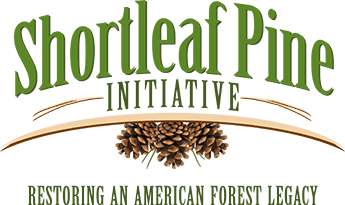|
Shortleaf research, newspaper articles, fact sheets, conference proceedings, literature reviews, and brochures.
All Shortleaf publications and documentsReid, A. M., & Robertson, K. M. (2012). Energy content of common fuels in upland pine savannas of the south-eastern US and their application to fire behaviour modelling. International Journal of Wildland Fire, 21(5), 591. Retrieved from https://www.researchgate.net/publication/258627109_Energy_content_of_common_fuels_in_upland_pine_savannas_of_the_south-eastern_US_and_their_application_to_fire_behavior_modeling Nowak, J., Long, A. J., & Soffes, A. R. (2003). Establishment of Silvopasture in Existing Pastures. University of Florida Cooperative Extension Service, Institute of Food and Agricultural Sciences, EDIS. Retrieved from http://edis.ifas.ufl.edu/fr145 Stignani, R. H. (1986). Esthetic considerations in management of shortleaf pine. Proceedings of symposium on the shortleaf pine ecosystem; 1986 March 31-April 2; Little Rock, AR. Monticello, AR: Arkansas Cooperative Extension Service: 248-262. Retrieved from http://www.srs.fs.usda.gov/pubs/45857 Lynch, T. B., Nkouka, J., Huebschmann, M. M., & Guldin, J. M. (2002). Estimating The Probability Of Achieving Shortleaf Pine Regeneration At Variable Specified Levels. Southern Research Station, General Technical Report SRS-48. Retrieved from https://www.fs.usda.gov/treesearch/pubs/3133  Estimating the probability of survival of individual shortleaf pine (Pinus echinata Mill.) trees
Estimating the probability of survival of individual shortleaf pine (Pinus echinata Mill.) trees
Shrestha, S. (2010). Estimating the probability of survival of individual shortleaf pine (Pinus echinata Mill.) trees. Proceedings of the 16th biennial southern silvicultural research conference. e-Gen. Tech. Rep. SRS-156. Asheville, NC: U.S. Department of Agriculture Forest Service, Southern Research Station. 314-315. Retrieved from https://www.srs.fs.fed.us/pubs/gtr/gtr_srs156/gtr_srs156_314.pdf  Estimation of Reineke and Volume-Based Maximum Size-Density Lines For Shortleaf Pine
Estimation of Reineke and Volume-Based Maximum Size-Density Lines For Shortleaf Pine
Lynch, T. B., Wittwer, R. F., & Stevenson, D. J. (2004). Estimation of Reineke and Volume-Based Maximum Size-Density Lines For Shortleaf Pine. Southern Research Station, General Technical Report SRS-71. Retrieved from https://www.srs.fs.usda.gov/pubs/gtr/gtr_srs071/gtr_srs071-lynch001.pdf  Evaluating subsoiling and herbaceous weed control on shortleaf pine planted in retired farm land
Evaluating subsoiling and herbaceous weed control on shortleaf pine planted in retired farm land
Kushla, J. D. (2010). Evaluating subsoiling and herbaceous weed control on shortleaf pine planted in retired farm land. Proceedings of the 14th biennial southern silvicultural research conference. Southern Research Station, General Technical Report SRS-121. Retrieved from https://www.srs.fs.fed.us/pubs/gtr/gtr_srs121/gtr_srs121_147.pdf  Experience with the selection method in pine stands in the southern United States, with implications for future application
Experience with the selection method in pine stands in the southern United States, with implications for future application
Guldin, J. M. (2011). Experience with the selection method in pine stands in the southern United States, with implications for future application. Forestry, 84(5), 539-546. https://www.srs.fs.usda.gov/pubs/ja/2011/ja_2011_guldin_001.pdf  Factors affecting the sprouting of shortleaf pine rootstock following prescribed fire
Factors affecting the sprouting of shortleaf pine rootstock following prescribed fire
Lilly, C. J., Will, R. E., Tauer, C. G., Guldin, J. M., & Spetich, M. A. (2012). Factors affecting the sprouting of shortleaf pine rootstock following prescribed fire. Forest Ecology and Management, 265, 13-19. Retrieved from https://www.srs.fs.fed.us/pubs/ja/2012/ja_2012_lilly_001.pdf Schmidtling, R. C., & Hipkins, V. (2002). Factors contributing to genetic variation in ice damage susceptibility in shortleaf pine. Presented at the 26th Southern Forest Tree Improvement Conference, Athens, GA, June 26-29,2001. Retrieved from http://www.treesearch.fs.fed.us/pubs/7121 |

